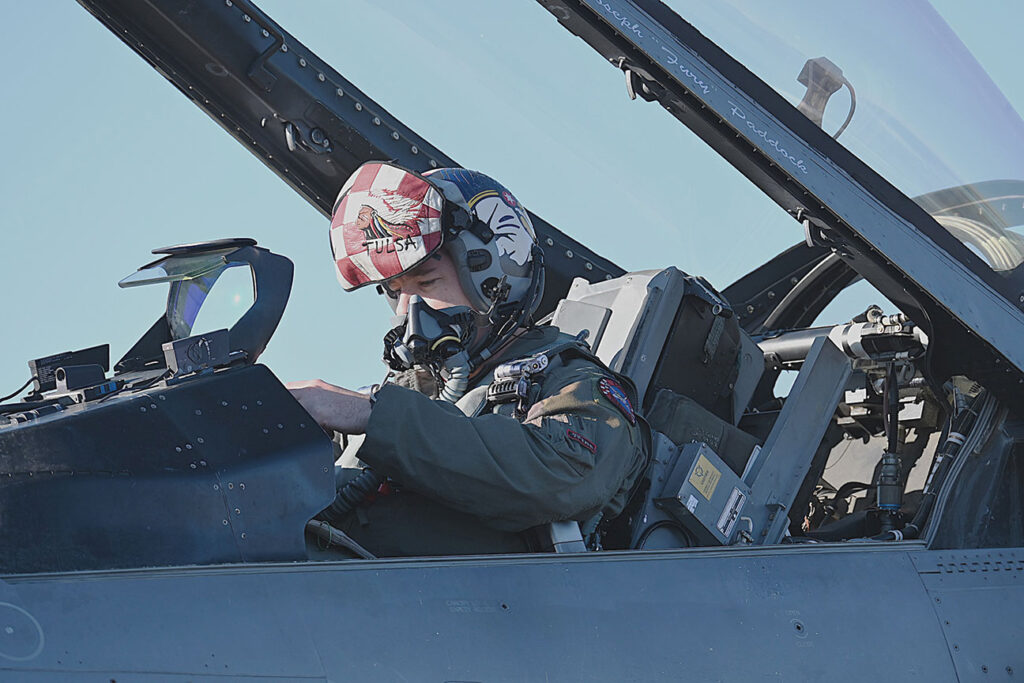A member of AFNORTH participates in Amalgam Eagle 24. / Michael Dougherty/U.S. Air Force
Showcasing the close partnership and shared interests of Mexico and the United States in air defense and security, the Mexican Armed Forces, the U.S. Department of Defense and federal agencies from both countries participated in a live-fly exercise November 13-14, 2024, at locations throughout Mexico and the U.S. The Amalgam Eagle 2024 air exercise, organized by the U.S. Northern Command’s (USNORTHCOM) Air Forces Northern (AFNORTH) and Mexican Secretariat of National Defense (DEFENSA), brought together interagency partners to strengthen readiness and improve coordinated responses, contributing to a more secure air domain for both nations.
“Amalgam Eagle is a testament to the enduring partnership between Mexico and the United States,” said Lt. Gen. Luke Ahmann, Continental U.S. North American Aerospace Defense Command Region – First Air Force (CONR-1AF) for AFNORTH & Air Forces Space (AFSPACE) commander. “This annual exercise not only bolsters our shared commitment to air defense but also reinforces the critical relationships that underpin our joint mission. By working together, we continue to fortify our partnership and elevate the air defense capabilities of both nations.”
Various aircraft, including U.S. F-16 fighter jets and Mexican T-6C+ planes, participated in the exercise. The T-6C+ is a turboprop military trainer used by the Mexican Air Force (FAM) and Mexican Navy (MARINA). It’s an enhanced version of the T-6 military trainer and can carry rocket pods and practice weapons.
A Beechcraft King Air turboprop acted as a track of interest (TOI) aircraft. An aircraft is designated as a TOI when there seems to be a discrepancy between its track and flight plan. The aircraft flew along the Mexico-U.S. border, simulating real-world scenarios to test combined air defense capabilities of both nations.
The Scenarios
An aircraft losing communications with air traffic control.
A King Air plane changing course without proper clearance.
A plane taking off from the U.S. changes course toward Mexico without proper notifications.
Two aircraft having midair emergencies that require a search and rescue.
The exercise also included personnel exchanges: One U.S. representative visited Mexico’s national air traffic control center, and two Mexican representatives visited the U.S. Customs and Border Protection Air and Marine Operations Center. “Training together in binational exercises like Amalgam Eagle provides invaluable experiences and insight to enhance our compatibility and ability to address shared security concerns, improve readiness, and facilitate coordinated response protocols,” said Pat Glynn, an exercise planner for CONR-1AF (AFNORTH & AFSPACE).
Exercise participants from Mexico included members of the defense forces, Federal Civil Aviation Authority and Air Traffic Control Agency. From the U.S., AFNORTH, the 601st Air Operations Center, the Federal Aviation Administration and the Customs and Border Protection’s Air and Marine Operations participated.
AFNORTH is responsible for homeland defense, defense support of civil authorities and security cooperation. It is responsible for planning, preparing and executing aerospace-based missions for the USNORTHCOM commander. AFNORTH also provides Department of Defense capabilities for disaster response in support of the Department of Homeland Security, Federal Emergency Management Agency, the National Interagency Fire Center, and state and local officials.
In testimony before the House Armed Services Committee on March 12, 2024, Gen. Gregory M. Guillot, commander of USNORTHCOM and the North American Aerospace Defense Command, said: “It is already apparent the military-to-military relationship between the United States and Mexico is robust and expanding as both nations address the challenges posed by common threats to our citizens and shared interests. The bonds between USNORTHCOM and our Mexican military partners are broad, resilient and focused on expanding our combined capability to defend and secure North America from myriad state and nonstate threats. Countering competitor influence in the region remains a key priority for USNORTHCOM and our Mexican military partners, and as a direct result, the U.S. and Mexican militaries are more operationally compatible than at any point in our shared history.”

